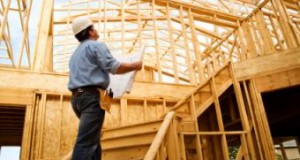After falling in April and May, the National Association of Home Builders (NAHB)/First American Improving Markets Index (IMI) resumed its upward trend in June, NAHB reported. According to the association, the number of U.S. housing markets showing sustained growth in housing permits, home prices, and employment rose to 263 in June, five more than May's total. The index grew for several months to a record high of 274 in March before falling to 273 in April and then 258 in May.
Read More »Commentary: Housing Recovery? Hold the Champagne
The last time both prices and sales of new homes increased in the same month was last September. What of course is missing from the two data sets is any indication of demand.
Read More »Housing Starts Drop Despite Improved Builder Confidence
In sharp contrast to reports of improving builder confidence, housing starts plunged at the steepest rate in more than two years in April.
Read More »Commentary: Seven Little Words
When the Federal Open Market Committee completed its two-day meeting at the beginning of May, it issued the usual six-paragraph post-meeting statement.
Read More »NAHB Improving Markets Index Tips Down Further in May
According to NAHB, the number of housing markets showing "sustained improvement" fell to 258 from April's 273.
Read More »Will Setbacks Derail the Homebuilding Recovery?
Despite some obstacles in the homebuilding recovery and three consecutive monthly declines in the National Association of Home Builder's homebuilder confidence index, Capital Economics remains largely optimistic about the homebuilding rebound. The analytics firm is sticking with its previous prediction that housing starts will reach about 1 million this year and 1.3 million next year as rising home prices help to mitigate increases in construction costs.
Read More »Multifamily Building Leads Housing Starts in March
Housing starts jumped 7.0 percent in March to a seasonally adjusted annual rate of 1,036,000, the Census Bureau and HUD reported jointly Tuesday. Multifamily starts (which increased 31.1 percent) accounted for all of March's gains, while single-family starts actually declined 4.8 percent. While the trajectory for both starts and permits shows a clear increasing pattern as the recovery marches on, residential construction activity remains far below pre-recession levels.
Read More »Fitch: Shortage of Developed Lots Threatens to Hinder Recovery
The housing recovery may be fast approaching a wall as well-located finished building lots become scarce, Fitch Ratings says in a recent analysis.
Read More »Commentary: Headlines and Bottom Lines
One of the most interesting results of poring through economic data reports is that the details often tell a different story than the headline. Coverage of the recent report on housing permits and starts, for example, was dominated by the increases in both metrics, suggesting a revival of the housing sector, a response some analysts suggested is due to tight inventories of existing-single family homes on the market. However, a closer look revealed a more important phenomenon.
Read More »NAHB Improving Markets Index Grows to 274
The National Association of Home Builders' (NAHB) Improving Markets Index (IMI) showed no signs of slowing down in March.
Read More »
 theMReport.com Your trusted source for mortgage banking news
theMReport.com Your trusted source for mortgage banking news







